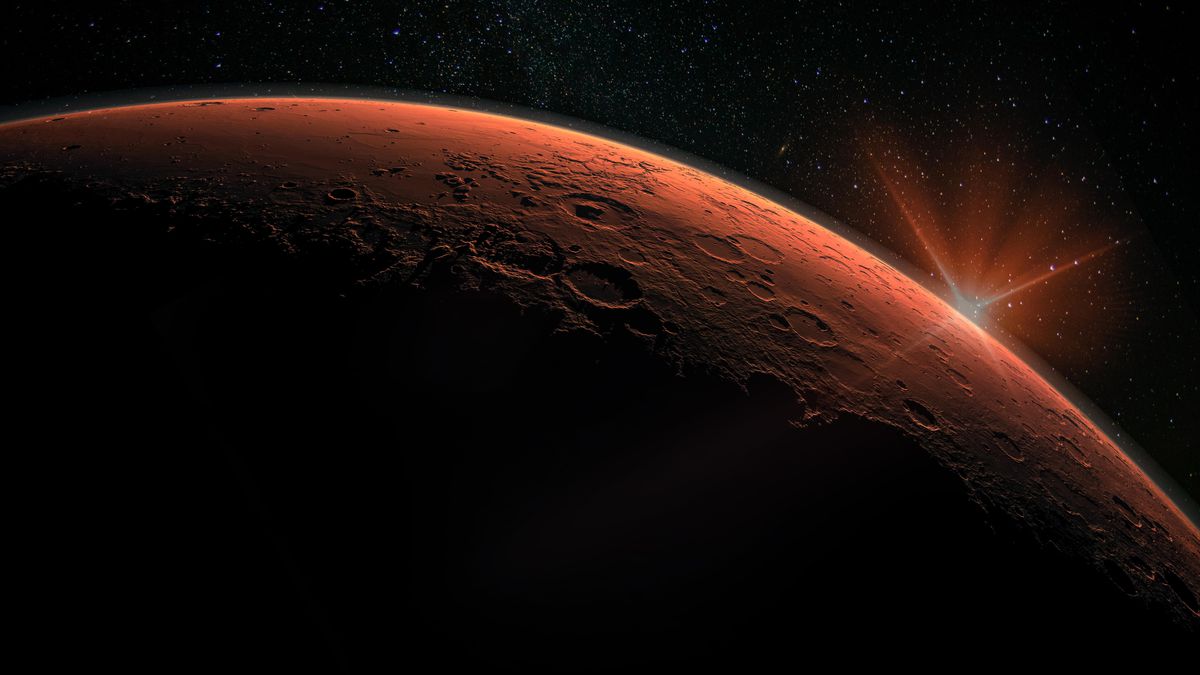
Happy New Mars Year! Today is equinox on Mars, and the beginning of a new “year 36” on Mars.
Getty
Happy New Mars Year! Today is equinox on Mars, and the beginning of a new year on Mars—and it’s going to be a very busy first week.
Why does equinox mean the beginning of a Martian year? What is the Mars 2020 mission? And when is the next Mars landing?
Here’s everything you need to know about the martian “Year 36,” how a year works on Mars as three spacecraft get captured by the ‘red planet’ and go into orbit after traveling 495 million miles from Earth.
How do days and years work on Mars?
One year on Mars is 668 “Sols”—the time it takes for the planet to make one revolution around its axis—with a single Sol measuring 24 hours and 39 minutes. That’s equal to 687 Earth days. That’s the length of time it takes for Mars to orbit the Sun once.
Why is it New Year’s Day on Mars today?
It’s the first day of “Year 36” on Mars—largely because in 1955 it was decided by NASA to designate a “Year 1” on Mars on this date (the “northward” equinox on Mars).
How the seasons work on Mars
The Martian year is twice as long as ours, but works in the same way. Today is the northward equinox, meaning spring in the north and fall in the south, with hemispheres receiving more of less sunlight according to where the planet is in its orbit of the Sun.
However, Mars orbits the Sun on a slightly elliptical orbit, so the seasons aren’t the same length—and this coming season is the longest.

7 February 2021 marks the start of Year 36 on Mars.
ESA
When are the seasons on Mars?
Here are the “Earthly” dates for the upcoming equinoxes and solstices in the next Martian year, given for its northern hemisphere:
- Spring equinox: February 7, 2021
- Summer solstice: August 25, 2021
- Fall equinox: February 24, 2022
- Winter solstice: July 21, 2022
What spacecraft are arriving at Mars this week?
After a seven-month journey from Earth three major missions will this arrive at Mars and go into orbit around the “red planet.” They are—in chronological order of when they’ll arrive:
Tuesday, February 9, 2021: Emirates Mars Mission (EMM) to Mars
EMM is carrying a probe called Hope, a Mars orbiter was developed by the UAE. After enduring a nerve-wracking 27-minute “dark half-hour” orbital insertion from 7:00 p.m. UAE time (10:00 a.m. EST/7:00 a.m. PST) it will enter orbit and begin studying the Martian atmosphere in late 2021.
It aims to build the first full picture of Mars’ climate throughout an entire Martian year, which has never been done before. It’s the UAE’s first space mission, and it mark’s the country’s 50th anniversary.
Wednesday, February 10, 2021: China’s Tianwen-1 mission to Mars
The China National Space Administration (CNSA) will beat NASA to Mars when Tianwen-1 enters orbit. Like NASA’s Mars 2020 mission, Tianwen-1 has a Mars rover, which will use a radar to search for water. However, that rover won’t descend to the Martian surface until May 2021.
If that’s successful then China will become the second country to successfully land a rover on Mars. Tianwen-1 means “questions to heaven.”
Thursday, February 18, 2021: NASA’s Mars 2020 mission to Mars
NASA’s Perseverance rover is targeted to land in Jezero crater on Mars on February 18, 2021 at approximately 12:55 p.m. PST/3:55 p.m. EST. It will also last for at least one Martian year.
All three spacecraft will have to take critical manoeuvres to slow down as they approach Mars, from around 75,000 mph to just 11,000 mph. Go too fast? Miss Mars. Go too slow? Crash into Mars. It’s going to be tense.

This image from ESA’s Mars Express shows a beautiful slice of the Red Planet from the northern polar … [+]
ESA/DLR/FU Berlin (G. Neukum), CC BY-SA 3.0 IGO
When is the next New Year’s Day on Mars?
In 687 days, which means the next New Year’s Day at Mars will occur on December 26, 2022.
Can Mars be seen tonight?
Sure—and from anywhere on Earth. However, you’re going to have to act relatively quickly if you want to see how Mars looks from Earth. If you want to know where Mars is tonight, go outside just after dark and look to the south. High up in the sky you’ll see a reddish-orange “star” with nothing close to it that it could be confused with. However, by the end of March it will be close to the sunset win the southwest, and much less obvious—it’s dimming with every passing day.
That’s because Mars was at its brightest and best during its opposition in October 2020 when it shone at a magnitude of -2.6, which is brighter than Jupiter. Mars makes its closest approaches to Earth during oppositions, which occur every 26 months. The next one is December 8, 2022.
Wishing you clear skies and wide eyes.
This article is auto-generated by Algorithm Source: www.forbes.com


